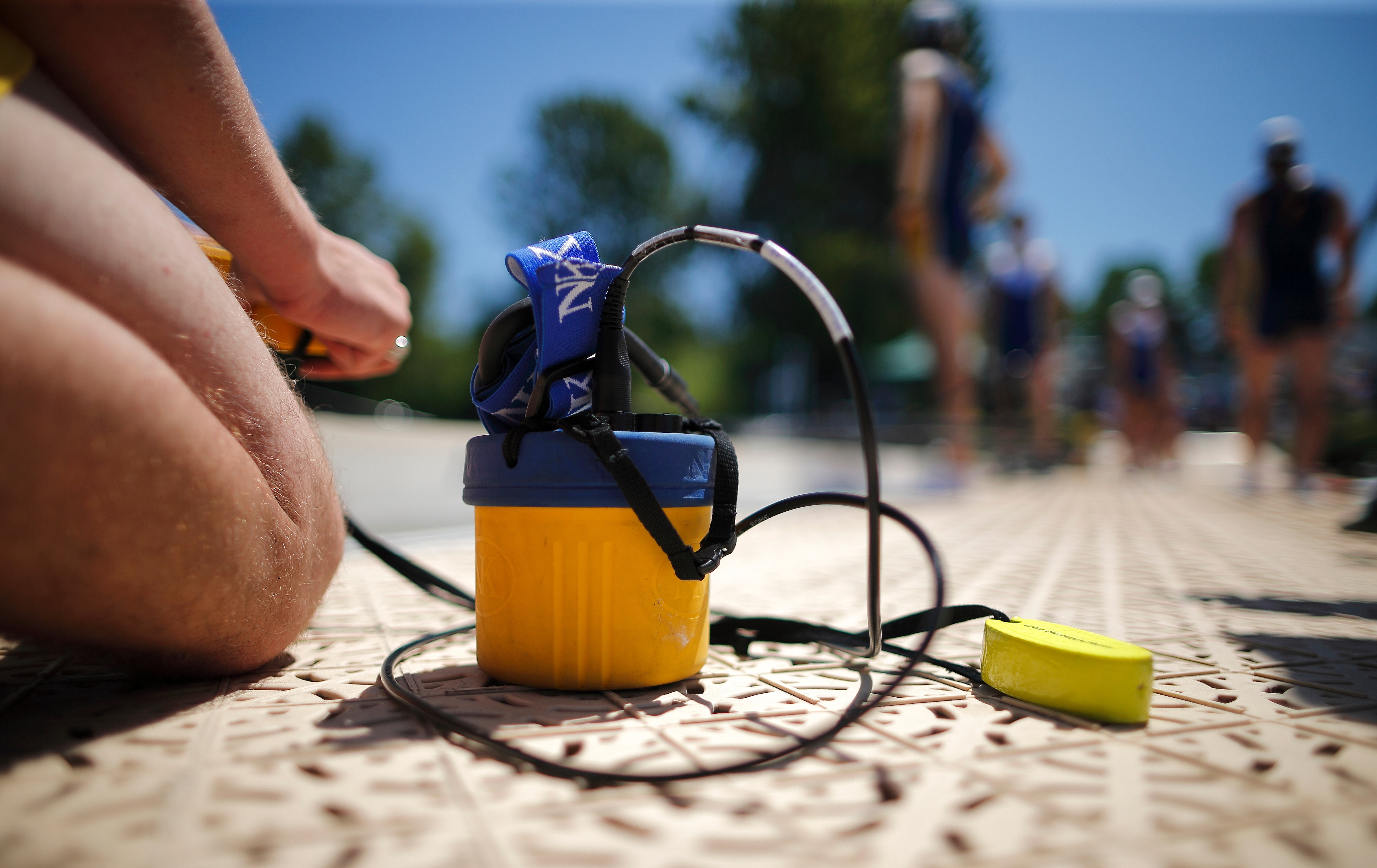Top 10 Tips to Get the Most from Your CoxBox

Maximize your investment in the essential coxing tool. Ten tips to help you get the most from your CoxBox from charging,sprint' storing, cleaning to simple repairs.
Whether a newbie or an experienced coxswain, there are always things to learn and ways to do things better. Including getting the most from your CoxBox. Here our top 10 tips to maximize your investment in this essential coxing tool.
- Keep it charged Ever raced around the boathouse before a practice, trying to find a charged CoxBox? Or halfway through the workout the battery dies? One of the features of the CoxBox GPS or CoxBox Core is extended battery life, with 10+ hours, but all models still need a little TLC. Establish a regular routine of charging during the rowing season. And don't forget about it during the months when you are not on the water. Just don't leave it plugged in for extended periods. Joe Racosky, Product Support Manager at NK Sports, recommends recharging the CoxBox battery pack to 100 % every six weeks.
- Don't hot-swap or force the battery pack
- Keep it clean
- Store it nicely
- Don't carry it by the wires
- Don't crank the volume
- Travel tip
- Learn how to use the data
- Easy fixes and repairs
- Don't try to repair the CoxBox unit yourself The CoxBox is sealed to be watertight. Do not break the seal nor attempt any repairs of the unit. This can cause more damage and will void the warranty. Check with NK Sports via their online Service Request. Repairs are not always possible for all models and part shortages may extend the time needed for repairs. Parts have become obsolete for the CoxBox 08 (also called CB 4). Consider the Trade-In Trade-Up program to get the latest model.
- Audio system maintenance kit
- Blue Ocean Megaphone
- LiNK Logbook
- Wiring kits and speaker extension modules
- Gear bag
The battery in the CoxBox can also be used in the Blue Ocean Megaphone. In the sprint to the dock or launch, a coach or a coxswain might be tempted to snag a charging battery. Stop. Be sure to turn off the Cox Box and take it off charge before removing and replacing the battery pack. Don't force the battery pack into the CoxBox in your hurry. Make sure to always align the battery pack correctly. Check that the two alignment bumps are matched with the two alignment grooves, and the single alignment bump is matched with the single groove. If you need to use force, it is not correctly aligned.
Cleaning prevents the accumulation of grime in connections and reduces corrosion. Daily, rinse off any salt water and always pat your CoxBox dry. Rowintel.com recommends a weekly clean if you row in salt or brackish water or monthly if your crew rows on freshwater. A helpful video demonstrates cleaning the connectors where dirt accumulates. Don't overdo the grease. NK Sports recommends using Nygel as a conductor grease, which you can buy by the tube or as part of a small maintenance kit - “a small investment with big returns!”. Remember to also give the Gear Bag a scrub every once in a while.
Some boathouses incline towards messiness, while others are clean and organized. Best not to leave your CoxBox in a heap of tangled wires on the dirty floor. Rowing Hacks by Row2K.com shows how to build a cabinet for your CoxBoxes (and other electronics and equipment). Very neat. Generally, and for longer term storage, do not wrap the microphone around the CoxBox. Despite the added strain relief engineered into the design, it just puts too much tension on the connectors. It's best to disconnect. Store at moderate temperatures, avoiding extreme cold or heat.
This would seem obvious, but coxswains have been spotted racing to the dock with their CoxBox dangling. You risk damaging the microphone.
Your crew will hear you just fine at a moderate volume. The CoxBox is powerful and at maximum volume you might cause static or damage the speakers, perhaps requiring repair or replacement. Static can also be caused by wet speakers - keep everything dry (Tip#3). If you have audio issues, NK Sports Knowledge Base summarizes possible reasons and how to test for the cause.
FFA regulations state that lithium batteries should be in carry-on luggage only. If you decide to do this, a tip is to bring product documentation with you, so that security personnel understand what it is. CoxBoxes and their batteries are safely shipped worldwide by NK Sports so you could ship your CoxBox by courier in advance or entrust it to the trailer. If you decide to put the CoxBox in your checked luggage do not lock your bag and have the product documentation with it.
You need to know the basics, like turning it on, starting the timer, clearing the screen, recording data and more. NK Sports has a wealth of information on its website to help you. Get started with this blog post and short video. Troubleshoot problems with this downloadable document. Learn the LiNK Logbook for post practice and race analysis and to understand how the data recorded by your CoxBox is used by the coach to make the boat go faster. Don't forget to check out Izzi Weiss' tips on how to become a better coxswain.
There are a few things that you can tinker with. Replacing damaged speakers or microphones is easy. Just unplug the old one and plug the new one in. You can buy modules of speaker extensions, eliminating the need to replace an entire wiring system in the boat. Full wiring kits for coxed fours or 8+ are available too, with or without speakers. Rowintel.com has a video to show you how to do this repair. Microphones are also easily replaced. In a pinch you can use a speaker as a temporary microphone - you will have to hold it very close and speak clearly.
Now get out there and get the most from your CoxBox.
More information on related products:







